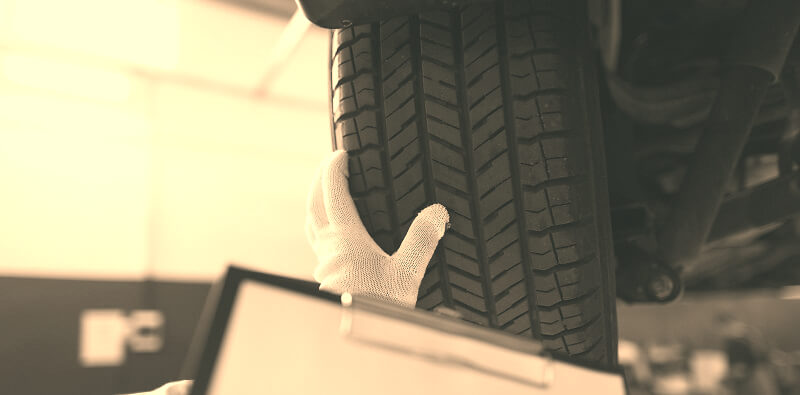Tire Inspection Checklist

Tire inspections are an essential aspect of vehicle maintenance that often goes overlooked. Regular tire inspections not only enhance your vehicle’s performance but also ensure its passengers’ safety. We will discuss the different aspects of a tire inspection, including visual inspection, determining tire age, and creating a tire inspection schedule.
Visual Inspection of Tires
One of the most critical steps in tire inspection is a thorough visual examination. This includes checking the tire tread, sidewall damage, and overall condition. To perform a visual inspection, follow the steps below:
Tread Depth Measurement
Tire tread depth is an important indicator of tire health. As tires wear down, their ability to maintain traction and disperse water decreases, increasing the risk of accidents. You can measure tread depth using a tread depth gauge or a simple coin test.
Insert a penny into the tire’s tread with Lincoln’s head facing down. If the top of Lincoln’s head is visible, your tire tread is below the recommended 2/32-inch minimum and should be replaced.
Signs of Uneven Wear
Uneven wear on your tires can result from various issues, including improper inflation, misalignment, or suspension problems. Check for uneven wear patterns like cupping, feathering, or excessive wear on one side of the tire. If you notice any of these signs, consult a professional to diagnose and resolve the issue.
Sidewall Damage
Inspect the sidewalls of your tires for any bulges, blisters, or protrusions. These deformities can indicate internal damage to the tire and increase the risk of a blowout. If you discover any sidewall issues, replace the damaged tire immediately.
Cuts & Punctures
Check for cuts, punctures, or any foreign objects lodged in the tire, such as nails or screws. Even small punctures can lead to slow leaks and a flat tire. If you find any damage, consult a professional to determine whether the tire can be repaired or needs replacing.
Tire Age
Tire age plays a significant role in tire safety, as rubber degrades over time. Locate the Department of Transportation (DOT) code on your tire’s sidewall, consisting of letters and numbers.
The last four digits represent the week and year of manufacture. For example, a tire with a DOT code ending in “4320” was manufactured in the 43rd week of 2020.
Tire Replacement Intervals
It is generally recommended to replace tires every six years, regardless of tread depth. Some manufacturers may recommend a different interval, so consult your owner’s manual or tire manufacturer for specific guidelines.
Additionally, always replace a spare tire that is ten years or older, even if it has never been used.
Regular Tire Inspections
Regular tire inspections are crucial for maintaining your vehicle’s safety and performance. Properly maintained tires provide better traction, ensure optimal fuel efficiency, and reduce the risk of tire-related accidents. Make tire inspection a part of your routine vehicle maintenance to enjoy a safer and more comfortable driving experience.
Tire Inspection Schedule
To create a tire inspection schedule, start by inspecting your tires at least once a month or before long trips. Keep a log of your inspections, noting any observed issues and actions taken to resolve them. Additionally, adhere to manufacturer-recommended tire maintenance intervals, such as rotations and alignments, to prolong the life of your tires and prevent uneven wear.
Consult Professional
While many aspects of tire inspection can be performed independently, it is essential to consult a professional in certain situations. These instances include:
- If you notice uneven wear patterns or excessive tread wear, as these issues could indicate underlying problems such as misalignment, improper inflation, or suspension issues.
- When experiencing persistent tire pressure fluctuations, as this could signify a slow leak or a damaged valve stem.
- If you are unsure about the severity of sidewall damage, cuts, or punctures, a professional can help you determine whether the tire needs repair or replacement.
- Regular tire maintenance services, such as tire rotation, balancing, and alignment, which require specialized equipment and expertise.
- If you have concerns about the age of your tires or need guidance on selecting the right tires for your vehicle.
Conclusion
In conclusion, conducting regular tire inspections is crucial for ensuring the safety and performance of your vehicle. By visually inspecting the tires for wear, damage, and age and adhering to a tire inspection schedule, you can help prolong the life of your tires and prevent potential accidents.
Moreover, do not hesitate to consult a professional for tire inspection and maintenance when necessary, as they can provide valuable expertise and services to keep your vehicle running smoothly and safely.

